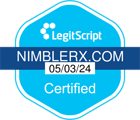


Unlocking the Full Potential of Your FSA or HSA
Flexible Spending Accounts (FSAs) and Health Savings Accounts (HSAs) are valuable tools that can help you save money on healthcare expenses while enjoying potential tax advantages. To fully leverage the benefits of these accounts, it's essential to understand how they work and make strategic use of the funds.
Know Your Account Details:
- Start by familiarizing yourself with the specific terms and conditions of your FSA or HSA. Understand the account balance, contribution limits, plan year, and any rollover or grace period policies. Being informed about these details will help you plan and utilize your funds wisely.
Budget for Qualified Expenses:
- Create a budget or estimate your anticipated healthcare expenses for the year. This includes deductibles, copayments, prescriptions, vision and dental care, eligible over-the-counter items, and other qualified medical expenses. Having a clear understanding of your expected costs will allow you to allocate the appropriate amount to your FSA or HSA.
Take Advantage of Employer Contributions:
- If your employer offers a matching contribution or employer-funded FSA or HSA contributions, make sure you contribute enough to maximize these benefits. Employer contributions are essentially free money that can boost your savings and help cover your healthcare expenses.
Use Pre-Tax Dollars for Eligible Expenses:
- Both FSAs and HSAs allow you to use pre-tax dollars to pay for qualified medical expenses, providing immediate tax savings. Be sure to keep track of your eligible expenses, such as doctor visits, prescription medications, and approved healthcare products. Save your receipts and documentation as proof of purchase and for potential reimbursement requests or audits.
Leverage Prescription Savings:
- Prescription medications can be a significant expense. Look for opportunities to save on prescriptions by using your FSA or HSA. Take advantage of discounted pricing through mail-order pharmacies, generic alternatives, or savings programs offered by your prescription drug provider.
Plan for Qualified Medical Procedures:
- If you have upcoming medical procedures or treatments, review your FSA or HSA balance to determine if there are sufficient funds to cover the associated costs. Consult with your healthcare provider to estimate the expenses involved, including copayments, deductibles, and any out-of-pocket costs.
Utilize Over-the-Counter (OTC) Items:
- Some FSAs and HSAs allow the purchase of eligible OTC items without a prescription. Take advantage of this benefit by using your account funds for items such as first aid supplies, allergy medication, bandages, or pain relievers. Check your plan guidelines or consult with your account administrator to ensure compliance with the approved list of OTC items.
Plan Ahead for Year-End Spending:
- For FSAs with a use-it-or-lose-it provision, it's crucial to plan your expenses as the end of the plan year approaches. Evaluate your remaining account balance and consider purchasing eligible items or scheduling medical appointments to fully utilize your funds before they expire. Some plans offer a grace period or a limited carryover option, so be sure to understand the specific rules governing your FSA.
FSAs and HSAs can be powerful tools to save money on healthcare expenses. By understanding your account details, budgeting for qualified expenses, taking advantage of employer contributions, and strategically using your pre-tax dollars, you can maximize the benefits of your FSA or HSA.













%20Explained.png)



















































.jpg)









.jpg)




.jpg)

